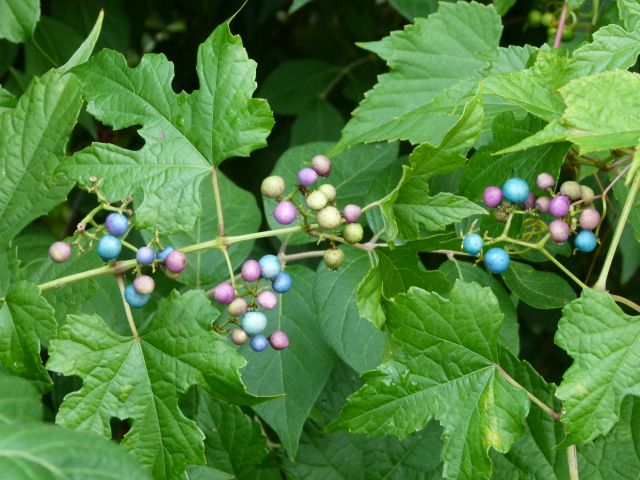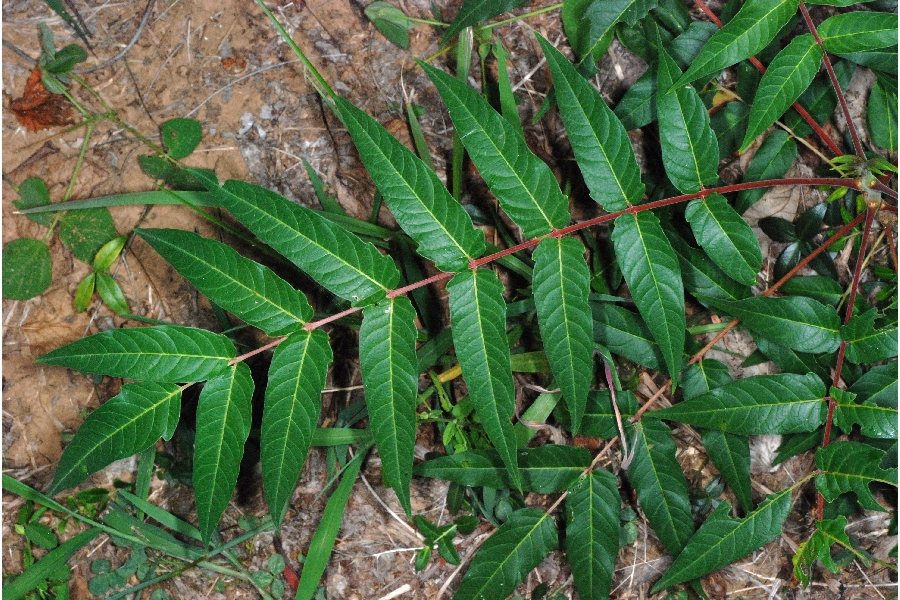Tree-of-heaven is an invasive tree species that outcompetes native tree species, deposits allelopathic (harmful to other plants) chemicals into the soil, and is the preferred host species of the latest threat to mid-Atlantic forest systems, the Spotted Lanternfly. Identification: Tree-of-heaven leaves are pinnately compound, meaning they have a central stem in which leaflets are attached on each side. One leaf can range in length from 1 to 4 feet with anywhere from 10 to 40 leaflets. The leaflets are lance-shaped with smooth or “entire” margins. When crushed, the leaves and all plant parts give off a strong odor – some liken it to peanut butter. The smell is the best way to distinguish tree-of-heaven from similar looking native species like black walnut, staghorn sumac, and hickory. However, all of the native species have leaflets with serrated edges, and tree-of-heaven has a smooth leaflet border.
Porcelainberry

|
Porcelainberry is a troublesome, shade tolerant invasive species capable of strangling native forest vegetation. Like all the plants called invasive exotics, it grows rapidly and has few pests because it did not evolve here with the checks and balances of competition from native plants and animals.Instead it takes the place of the plants that supply the resources our native wildlife needs.
Identification: Often confused with native grape species, there are two distinguishing characteristics that show up in spring and summer that will help you know which vine to remove. In the spring, the plant has white flowers grouped into an umbrella-shape called a cymose panicle. These flowers stick up, whereas native grape species flowers hang down. The other characteristic to identify comes later in the growing season when the vine produces fruit. Porcelainberry has fruit with widely variable coloring ranging from blue, pink, purple, to cream. The berries also are held upward, compared to native grapes that have fruit that droops downward.
|
|
|
|
|
|

